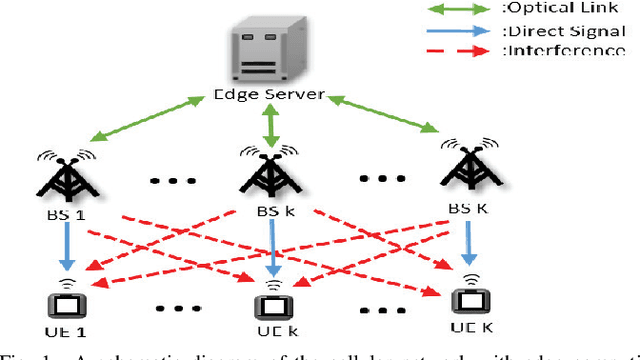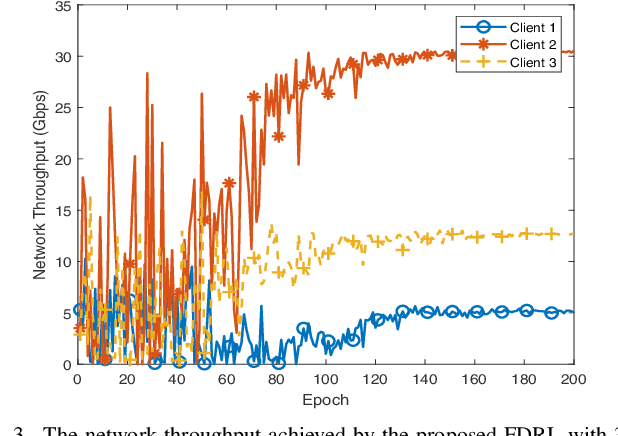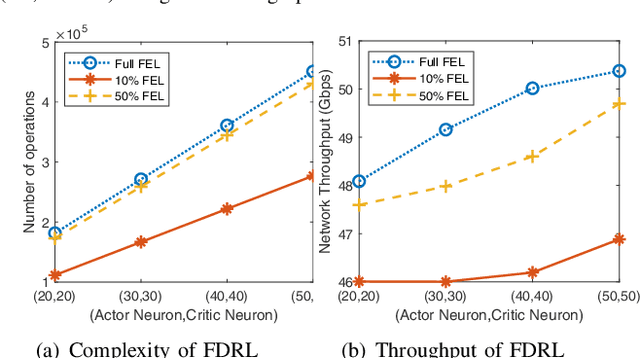Federated Deep Reinforcement Learning for THz-Beam Search with Limited CSI
Paper and Code
Apr 25, 2023



Terahertz (THz) communication with ultra-wide available spectrum is a promising technique that can achieve the stringent requirement of high data rate in the next-generation wireless networks, yet its severe propagation attenuation significantly hinders its implementation in practice. Finding beam directions for a large-scale antenna array to effectively overcome severe propagation attenuation of THz signals is a pressing need. This paper proposes a novel approach of federated deep reinforcement learning (FDRL) to swiftly perform THz-beam search for multiple base stations (BSs) coordinated by an edge server in a cellular network. All the BSs conduct deep deterministic policy gradient (DDPG)-based DRL to obtain THz beamforming policy with limited channel state information (CSI). They update their DDPG models with hidden information in order to mitigate inter-cell interference. We demonstrate that the cell network can achieve higher throughput as more THz CSI and hidden neurons of DDPG are adopted. We also show that FDRL with partial model update is able to nearly achieve the same performance of FDRL with full model update, which indicates an effective means to reduce communication load between the edge server and the BSs by partial model uploading. Moreover, the proposed FDRL outperforms conventional non-learning-based and existing non-FDRL benchmark optimization methods.
 Add to Chrome
Add to Chrome Add to Firefox
Add to Firefox Add to Edge
Add to Edge